
"Fuel imports are possible, they are not prohibited"
By the start of the heating season, Naftogaz aims to pump 13 billion cubic metres into storage facilities. Is this enough for the winter, given the president's desire to build 1 GW of gas-fired shunting generation to produce electricity?
We plan to store 13.2 bcm of natural gas as of 1 November. This is usually when the heating season starts, given the warmer weather conditions in previous years. Does this volume cover additional needs? The answer is yes. Let's hope that the pace of installing new generation will keep pace with our expectations.
Where did this figure of 1 GW come from? Why did the President announce it?
I believe that the President explained everything very clearly and logically when he spoke at the Recovery Conference in Berlin. And we all understand that today Ukraine is focused on providing additional generation capacity to get through the next winter.
From this perspective, our success has three components. The first is our ability to restore large power plants in time. In my opinion, this will give the largest figure of additional or missing capacity now. The second component is additional generation from new installations: mobile, decentralised and others. And the third component, which may be the key one, is the state's ability to protect these facilities with air defence systems. This equation is the formula for our success before the next winter. We will see whether some components will work more or less, but they are all equally important.
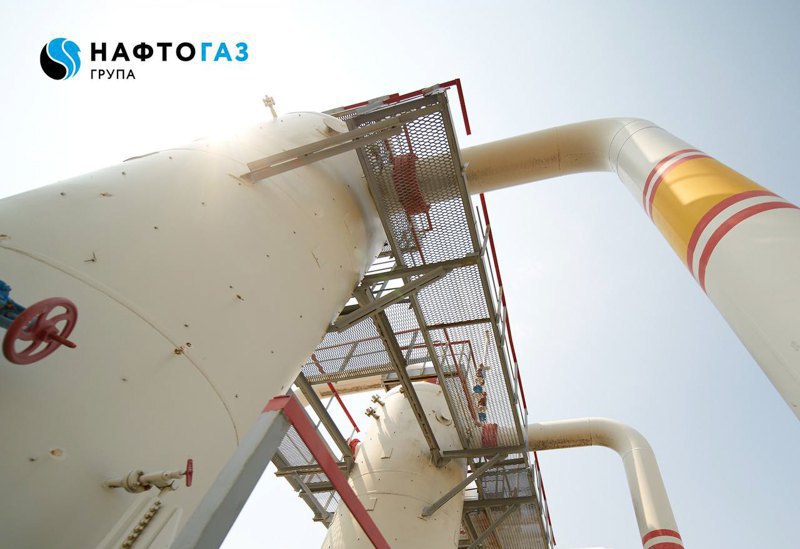
How much gas have you managed to store in underground storage facilities?
First, we are already approaching the 10 billion cubic metres mark in our underground storage facilities. Secondly, our injection rates since April have been ahead of last year's season. We are now talking about a figure of up to 400 million cubic metres more. We pump about 28-30 million per day. Months are different, and now we are moving to the fastest possible injection. It will be more than 30 million cubic metres per day. That is why we are very optimistic and constructive about meeting our target of 13.2 bcm by 1 November.
Does Naftogaz plan to do without fuel imports this heating season as well? How will this be implemented?
What does gas production in Ukraine look like? More than 80% of production belongs to state-owned companies. The rest is private. For example, the share of Ukrgazvydobuvannya (UGV), the largest state-owned gas producer, was falling before the full-scale invasion. And already during the war, in 2023, the UGV team was able to significantly increase its production to more than 13.2 billion cubic metres. As for our plans for this year, Ukrgasvydobuvannya plans to produce up to 15 bcm in 2024. This will be a consolidated figure, because now we are adding Ukrnafta's production to ours. Private companies produce about 3 bcm.
I believe that Ukraine made a historic achievement last year: for the first time, it was fully self-sufficient in natural gas. Yes, there are various factors behind this, including a decrease in consumption by both the population and the industrial segment. This is all understandable, but on the other hand, we have increased production. We are among the top three European countries in terms of gas resources and reserves, along with Norway and the UK.
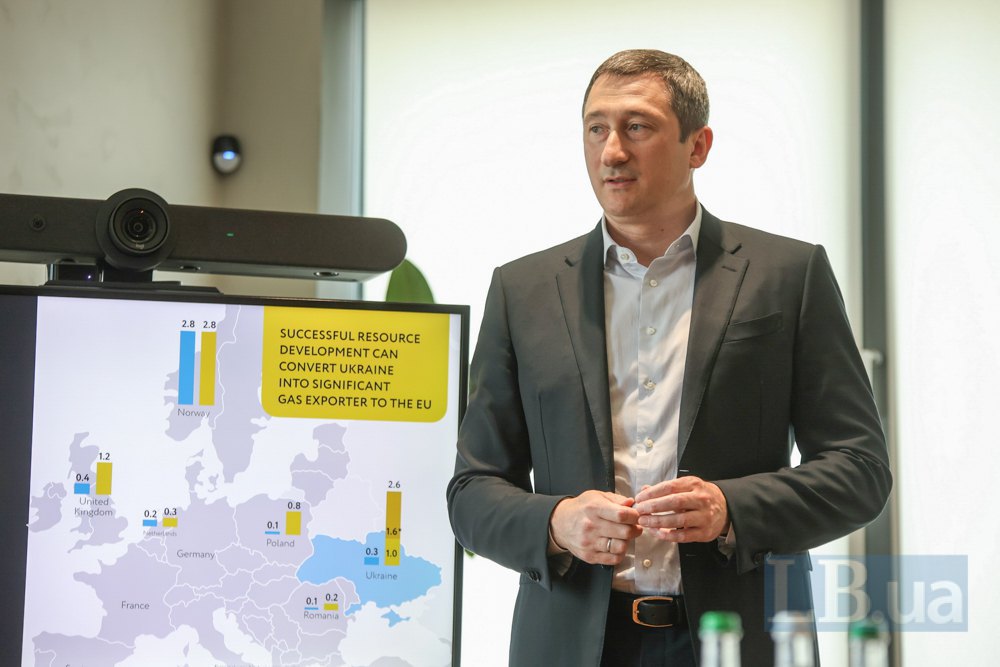
Is there a problem with imports? No, there isn’t! Imports are possible, they are not prohibited. I will be happy if someone will additionally import and store fuel in our gas storage facilities. But all the segments provided by the PSO model for households, district heating companies, or others, should be covered exclusively by our gas. And we have enough of it.
Will Naftogaz buy fuel from private producers? What volumes are we talking about?
When I was appointed to the company, there was already a moratorium on gas exports, and this is logical. During the war, we have to preserve everything we have. But this could affect the motivation of private companies. That is why we offered them the following model: we are launching a Ukrainian energy exchange. And through it, Naftogaz is ready to buy all the gas they have left. Because they have their own customers, they supply their enterprises. And I confirmed this idea again. I recently had a meeting with representatives of private companies. And the price on the exchange is quite competitive. We have fulfilled everything we promised, and I feel trust from private producers. This is about the stability of the industry. We plan to do the same in 2024.
So what price are we talking about?
It changes because it is a market. On average, we are talking about UAH 14 thousand. Sometimes less, sometimes more.
And how much gas is Naftogaz ready to buy from private companies?
If they offer the entire volume of gas produced to the energy exchange, we are ready to buy it. But they will also sell it to their customers.
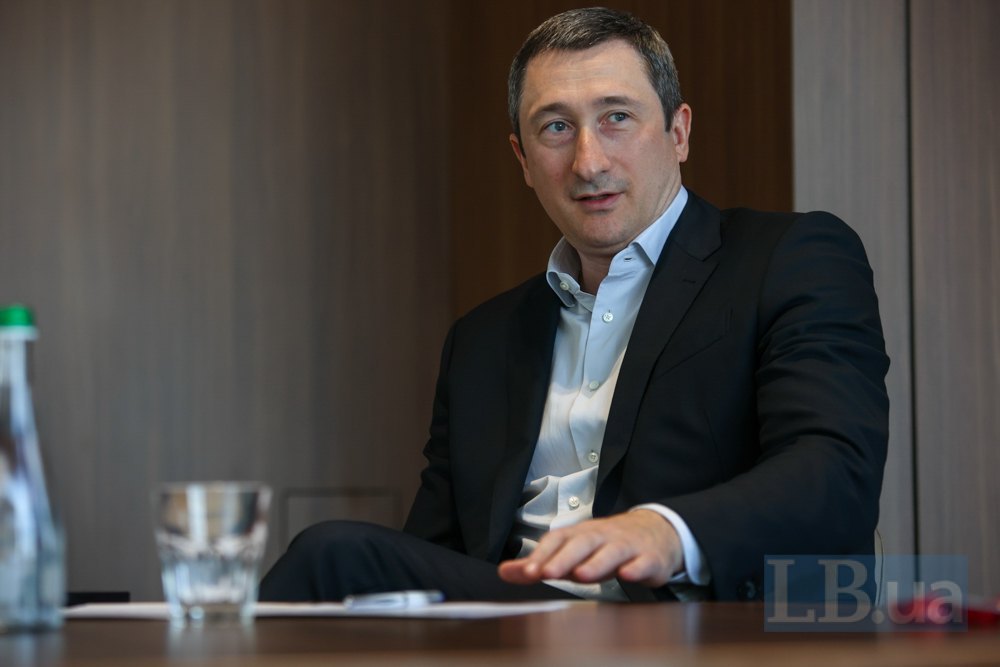
"The cost of gas to a non-resident is $1.5bn. This is the largest temporary investment in Ukraine during the war."
Russians have already fired several times at the gas storage infrastructure. If access to the UGS facilities is restricted due to possible repeated attacks, will Ukraine be able to technically import gas from the EU on an emergency basis?
There are several scenarios in which we could use the so-called emergency credit line from the EBRD, which would allow us to import gas from Europe on our own. There is no shortage or deficit of fuel in Europe. Their storage facilities are more full than before. So yes, it is absolutely possible. But I hope that our gas storage system will function despite potential significant attacks, and we are working on it.
Has the number of non-residents (foreign companies) willing to store their gas in Ukraine decreased due to the attacks on UGS facilities?
In 2022, we had 300 million cubic metres of non-resident gas in our storage facilities, which is very little. A year later, this figure was 2.5 billion, and this was during a full-scale war. At first, it was said that there would be some European guarantees for non-residents. But these 2.5 billion cubic metres were stored without any guarantee. We found arguments to persuade foreign companies to store their gas with us, and we organised the process in a transparent and efficient manner. However, this was a purely commercial risk for these companies. I am grateful to them for their trust and support of Ukraine in this difficult time.
The value of this volume at the time was $1.5 billion. It was the largest temporary investment in Ukraine during the war. Therefore, it is important to understand that supply and demand are often more decisive than any guarantees, even government guarantees. It was supply and demand that led to non-residents pumping in such a volume. We plan to increase this volume of gas this year.
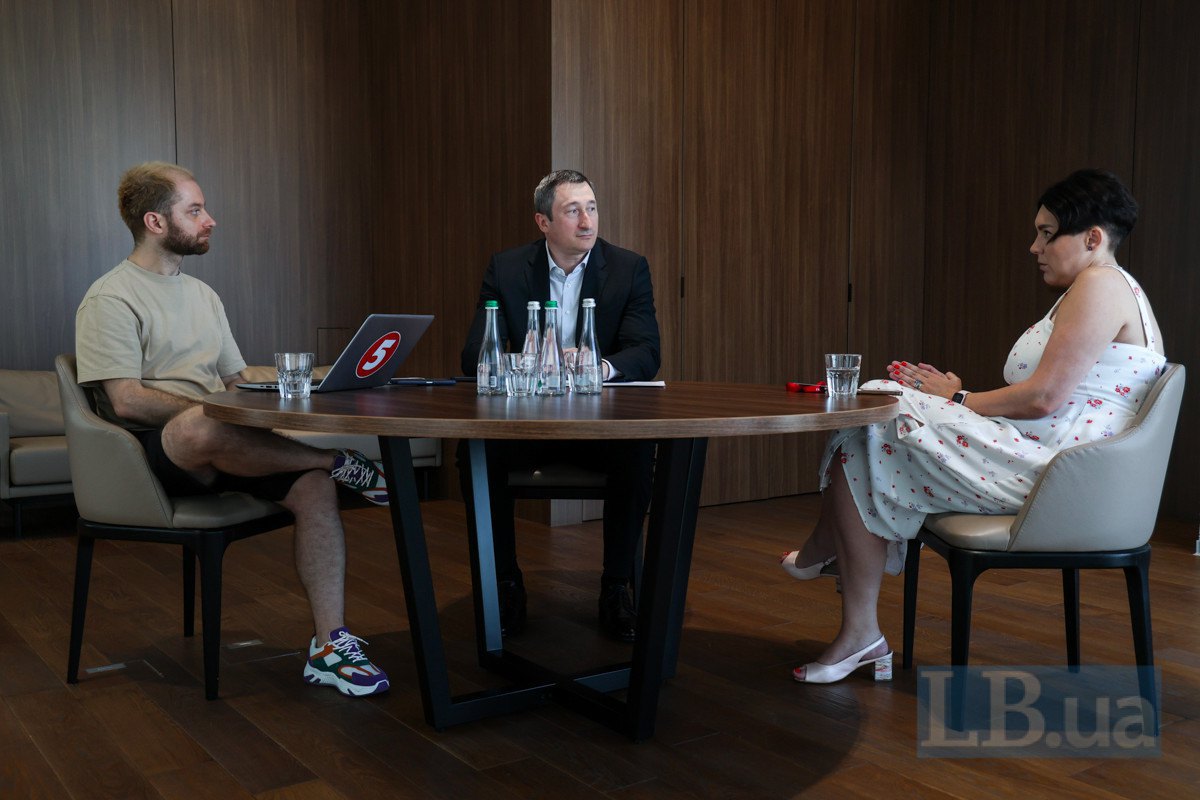
How much does this service bring to the state?
There are three services here: injection, storage and selection. For us, it is best if foreign companies continue storage for the next season. For example, after the winter, 500 million cubic metres were left. In general, this is not a very significant income in the Naftogaz Group system. But there are other important factors. The first is that the more non-resident gas we have in our storage facilities, the better the pressure there. This is because our underground storage capacity is twice as large as we actually use. Therefore, we make such active offers, various packages, so that non-residents continue to store gas. Another factor is the country's reputation. When we were able to attract well-known international companies and they pumped their gas into Ukrainian storage facilities, we restored our reputation as a reliable Ukrainian partner.
You may ask me whether these seven attacks affect non-residents.
They certainly do - I cannot deny it. But we forecast a very high spread [the difference between the best prices] in August. And this is likely to motivate trading companies to come to Ukraine. And in September-October, European storage facilities will be full to the brim. And one way or another, they will consider alternative solutions.
Litigation is ongoing, which has effectively paralysed production at one of Ukraine's largest gas fields, Sakhalin. Prior to the full-scale invasion, it was producing about 800,000 cubic metres a year. What losses does the state suffer?
The licences are not working now, the field is shut down. This is a treacherous situation. We have lost 600 million cubic metres of gas from the projected balance.

Theoretically, if a decision is made to resume production at this field, how long will it take Naftogaz to set up the processes?
Ukrnaftoburinnya is in coordination with Ukrnafta, so they will start immediately. This requires investment. When we calculated the balance sheet, we hoped that this would happen in the second half of the year. Now we have postponed these plans to the sixth quarter. Of course, this will be a smaller volume of gas production, because it is impossible to restore the same volume immediately, and this must also be understood.
"Naftogaz will absolutely not negotiate with Gazprom to extend the agreement"
The European Union and Ukraine are discussing the possibility of transiting Azerbaijani gas through the Ukrainian gas transmission system. What is our interest?
The volume of Russian gas transit to the EU through Ukraine is 14 billion cubic metres per year. This is about 4% of the total consumption in Europe. Can these percentages have any impact on the market, prices or shortages? Absolutely not. Therefore, this is not a question of any impact on the pan-European situation. This is a matter of certain countries next to Ukraine.
Naftogaz will categorically not negotiate the extension of the agreement with Gazprom. That's it. On the other hand, Ukraine as a state has a top strategic asset - the gas transmission system. For us, this is a key model of strategic existence. And it is very important for us that the GTS works. Increased gas production will hopefully lead to Ukraine becoming an exporter one day. Especially after the market liberalisation. And we will need to take advantage of this. I believe that Ukraine's gas transmission system and transit should work, but without Gazprom.

Is Naftogaz involved in negotiations with the Azerbaijani side?
I recently had a meeting with the management of Socar. Yes, we are discussing their proposal. But the primary task is not transit, but storage of Azerbaijani gas in Ukraine's underground storage facilities, which is a very important factor.
Theoretically, we are talking about 13-14 billion cubic metres of transit annually. However, Azerbaijan does not have that much free resource. Where is the guarantee that Russian gas will not go to the EU under the guise of Azerbaijani gas?
We need to set clear conditions, and we are ready to do so.
What is the point of establishing supervisory boards in Naftogaz subsidiaries? Will the members of these boards receive salaries, and what level will they be?
At the time of my appointment, Naftogaz did not have a supervisory board.
We managed to form it quite quickly. The Supervisory Board started working at the end of January 2023. It consists of four independent members and three state representatives. All of them are very experienced. The Chairman of the Supervisory Board, Anthony Marino, is a highly qualified professional who regularly visits Kyiv and actively cooperates with the teams of our businesses.
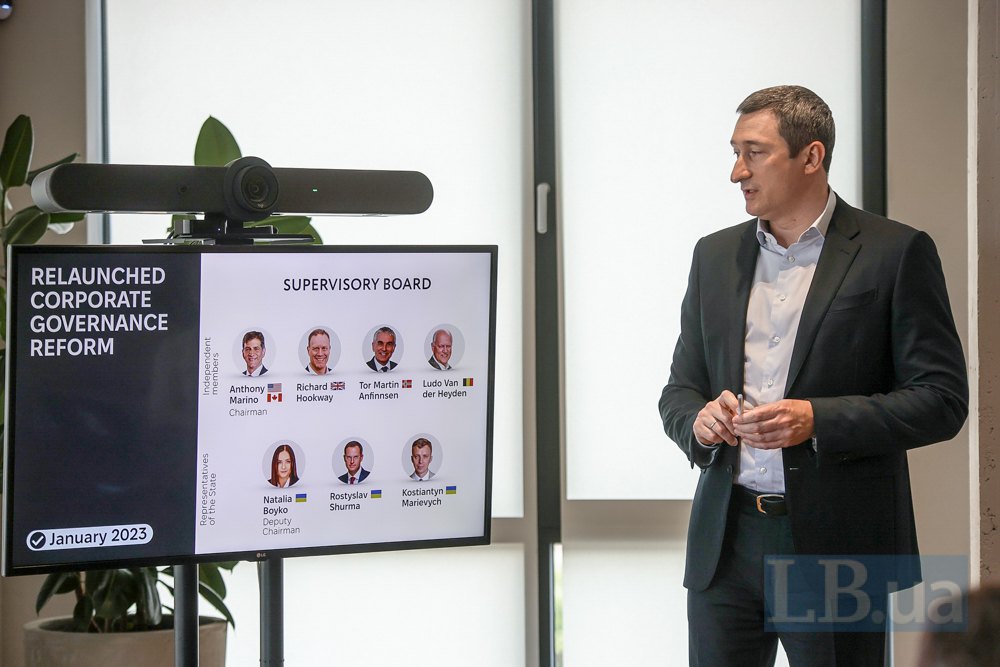
The Supervisory Board plays an important role in ensuring transparency and compliance with OECD standards. This is also important for our European integration and the trust of our international partners.
Is it necessary or not? I think experience has shown that it is necessary. Yes, it is an additional effort, but it generally yields results. The consolidated result of the Group in 2022 was UAH 80 billion in losses, and the result of 2023 was UAH 23 billion in profits. We paid UAH 14 billion in dividends to the state. We plan to pay UAH 100 billion in taxes this year alone.
There are speculations that supervisory boards are very expensive. I do not agree with this. We use regulations for determining salaries, which are regulated by the Cabinet of Ministers depending on the size of the company and its performance. For example, the supervisory board of Ukrnafta has a salary of about UAH 300,000 per month. But finding specialists of this level is a serious process. And it's not just some theoretical work on the board, but regular meetings. Committees meet every week. And they prepare for it and provide substantial support. And most of the meetings take place in Ukraine.
One of the big problems in the energy sector is total debts. You have stated that gas producers face a significant problem with debts for gas owed by heat and power producers. They currently owe over UAH 60 billion for gas. Does the government or Naftogaz understand how to solve the problem of these debts?
The way out is to liberalise the market. There is no other option. When I was in the Cabinet of Ministers, I was responsible for preparing for the heating season for two years. It was a hard work with local governments and utility companies. For example, in all European countries, the heating season starts by itself.
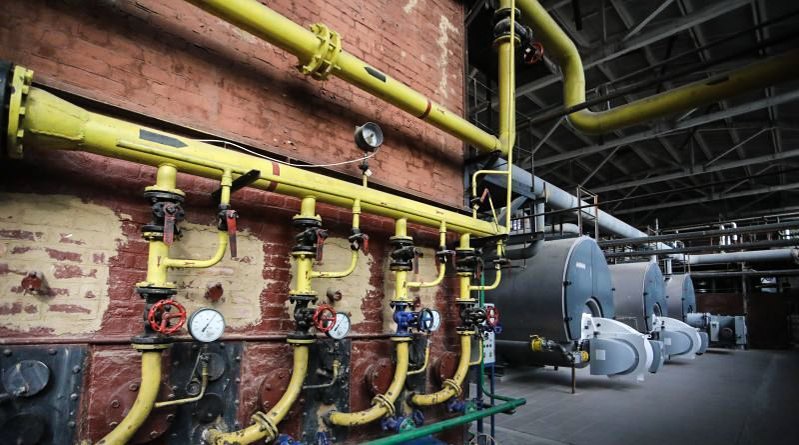
In our country, we still need to resolve the issues of debts, preparation of networks and enterprises, settlements, bankruptcy, and court cases. And it shouldn't be like this!
Why do these debts arise? In fact, the tariffs do not correspond to market realities, they are lower than the cost of production. There are various moratoriums in place. And there are also political and corruption risks involved. The debt of district heating companies to Naftogaz Trading is UAH 62 billion. By the way, our population is very disciplined. I am grateful to every Ukrainian for paying for gas and its delivery. The payment rate among household consumers exceeded 90%. People understand that the money they pay through taxes goes to finance the Armed Forces.
But the level of payment by enterprises has always been around 50%. In other words, gas was supplied, and the district heating company took it because it wanted to take as much as possible. And at a regulated price, i.e., actually at a quarter of the cost. We have now improved our calculations. I am proud that I have very close cooperation with local authorities and mayors. I approached them and, as a result, we improved the calculations and resolved most of the problematic issues, so I am grateful to them for their constructive approach.
For example, in Kharkiv, the level of payments by district heating companies reached 82%. As a result of our cooperation, cities such as Kyiv, Lviv, Odesa, Zaporizhzhya and Zhytomyr paid 100% for the heating season for the first time. In previous years, it was less than 50%. Where necessary, we meet the mayors halfway, but we also ask them to fulfil their obligations.









